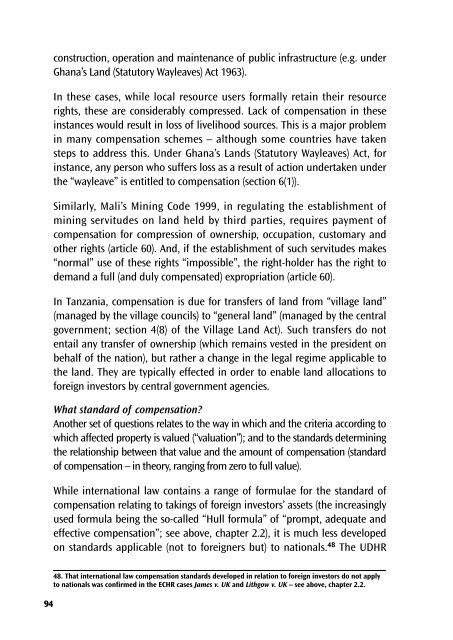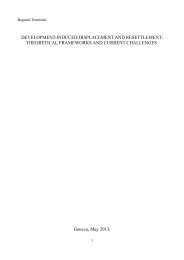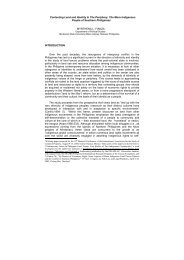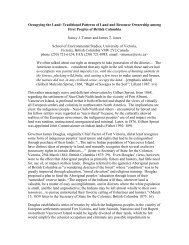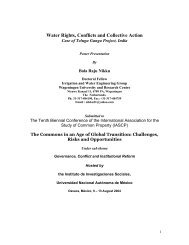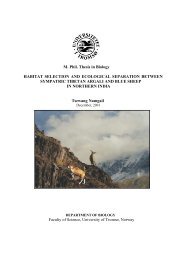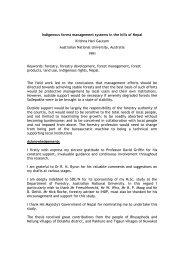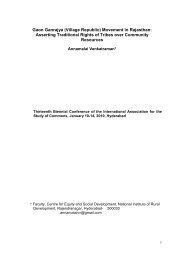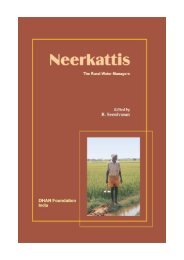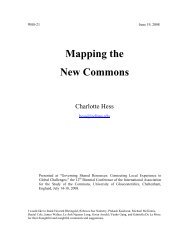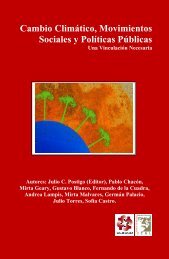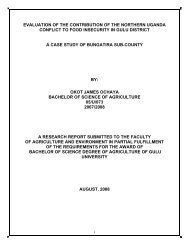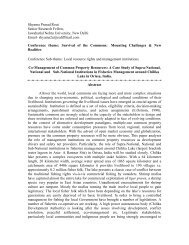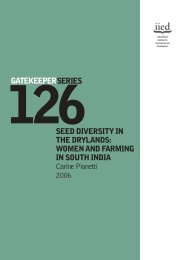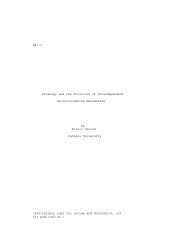Legal empowerment for local resource control
Legal empowerment for local resource control
Legal empowerment for local resource control
Create successful ePaper yourself
Turn your PDF publications into a flip-book with our unique Google optimized e-Paper software.
94<br />
construction, operation and maintenance of public infrastructure (e.g. under<br />
Ghana’s Land (Statutory Wayleaves) Act 1963).<br />
In these cases, while <strong>local</strong> <strong>resource</strong> users <strong>for</strong>mally retain their <strong>resource</strong><br />
rights, these are considerably compressed. Lack of compensation in these<br />
instances would result in loss of livelihood sources. This is a major problem<br />
in many compensation schemes – although some countries have taken<br />
steps to address this. Under Ghana’s Lands (Statutory Wayleaves) Act, <strong>for</strong><br />
instance, any person who suffers loss as a result of action undertaken under<br />
the “wayleave” is entitled to compensation (section 6(1)).<br />
Similarly, Mali’s Mining Code 1999, in regulating the establishment of<br />
mining servitudes on land held by third parties, requires payment of<br />
compensation <strong>for</strong> compression of ownership, occupation, customary and<br />
other rights (article 60). And, if the establishment of such servitudes makes<br />
“normal” use of these rights “impossible”, the right-holder has the right to<br />
demand a full (and duly compensated) expropriation (article 60).<br />
In Tanzania, compensation is due <strong>for</strong> transfers of land from “village land”<br />
(managed by the village councils) to “general land” (managed by the central<br />
government; section 4(8) of the Village Land Act). Such transfers do not<br />
entail any transfer of ownership (which remains vested in the president on<br />
behalf of the nation), but rather a change in the legal regime applicable to<br />
the land. They are typically effected in order to enable land allocations to<br />
<strong>for</strong>eign investors by central government agencies.<br />
What standard of compensation?<br />
Another set of questions relates to the way in which and the criteria according to<br />
which affected property is valued (“valuation”); and to the standards determining<br />
the relationship between that value and the amount of compensation (standard<br />
of compensation – in theory, ranging from zero to full value).<br />
While international law contains a range of <strong>for</strong>mulae <strong>for</strong> the standard of<br />
compensation relating to takings of <strong>for</strong>eign investors’ assets (the increasingly<br />
used <strong>for</strong>mula being the so-called “Hull <strong>for</strong>mula” of “prompt, adequate and<br />
effective compensation”; see above, chapter 2.2), it is much less developed<br />
on standards applicable (not to <strong>for</strong>eigners but) to nationals. 48 The UDHR<br />
48. That international law compensation standards developed in relation to <strong>for</strong>eign investors do not apply<br />
to nationals was confirmed in the ECHR cases James v. UK and Lithgow v. UK – see above, chapter 2.2.


